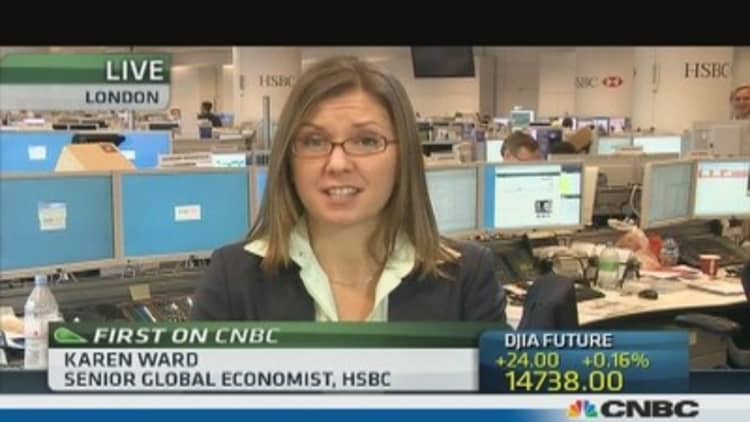India's worrying economic fundamentals appear to be on the mend, with the country's trade deficit improving markedly in September. So, has Asia's third largest economy finally turned a corner?
The country's trade deficit narrowed significantly to $6.8 billion last month, the lowest in over two and a half years, compared with $10.9 billion in August. The improvement was driven by double-digit export growth and a sharp decline in non-oil imports, gold in particular.
The positive outturn has raised expectations for the country's current account position to recover notably in the third quarter.
(Read more: Raghuram Rajan: India's deficit is under control)
"We see a rising possibility that India's current account deficit will fall below $60 billion, or 3.3 percent of GDP [gross domestic product] in fiscal year 2014, compared with our forecast of 3.7 percent of GDP," said Rahul Bajoria, economist at Barclays. The current account deficit stood at 4.8 percent of GDP in the past fiscal year ended March 2013.

"The current account deficit could be less than $10 billion in the third quarter, significantly below our current projection of $14 billion," he said.
India's current account deficit was a major driver behind the harsh selloff in the rupee between May and September when concerns over the Federal Reserve winding down its quantitative easing program reached fever pitch. The rupee has since staged a sizable turnaround, making it the best performing global currency in September.
(Read more: Best performing currency in September? India's rupee)
However, economists warn that it is too early to conclude that India's economy is firmly on the mend, noting that it remains to be seen whether improvement in the trade deficit can be sustained into the fourth quarter - a period that typically sees a pickup in gold imports due to the festive season.
"It was comforting to see that gold imports came down substantially, but whether this points to a sustainable trend or not, that's the key question," said Vishnu Varathan, senior economist at Mizuho Corporate Bank. Imports of gold and silver eased to $0.8 billion in September, sharply lower from $4.5 billion the same time last year, a sign that the government's efforts to curb gold imports are proving effective.
This year, India - the world's largest consumer of gold - has hiked the duty on gold imports three times to a record 10 percent to help reduce its import bill.
(Read more: The 'sexy' central banker that's causing a stir)
Radhika Rao, economist at DBS bank adds that while the economic fundamentals have improved somewhat, the country's budget deficit remains a worry and growth outlook remains bleak. "There could be an overshoot of fiscal deficit targets. The only way it can be solved is make a deliberate, sharp cut back in spending, but this will mean lower growth," she said.
Rao expects growth to remain sluggish in the medium-term, noting that there is little scope for sizable pickup up in investment activity given policy uncertainty ahead of next year's general elections.
Nonetheless, she says it's safe to say the "bearish spell" that plagued India this summer has finally been lifted, helped by Reserve Bank of India governor Raghuram Rajan's efforts to stabilize the currency and control inflation, and the Federal Reserve's decision to delay tapering.
— CNBC's Ansuya Harjani; Follow her on Twitter @Ansuya_H


